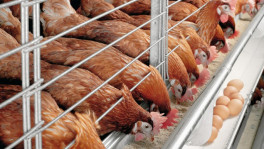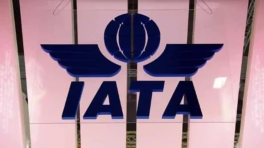End of a death machine: Enfield .303
It is the Enfield .303 that has fought more battles in the world – and killed more enemies – than any other weapon. And now it being phased out, India did it just yesterday

Think of the famous photograph taken by Robert Capa of the Spanish Civil War. It was shot at the exact moment that a soldier's advance was cut short by a bullet. The man was falling back – already dead – and in his outstretched hand, he was still holding his Enfield .303 rifle.
Recall a photo of the Battle of the Somme in the First World War. British infantrymen were snapped climbing over a trench with .303 Enfield rifles – fitted with bayonets – held high, ready to charge at the Germans.
Or, remember the prominent picture of our Liberation War. Three young freedom fighters fill the frame – with one standing and two crouching on the ground holding their .303 rifles at the ready.
Well, it is the Enfield .303 that has fought more battles in the world – and killed more enemies – than any other weapon since it was first adopted by the British army in 1895. And my own brother died with a shot – probably from this same rifle – in 1971 by the Pakistan Army.
I distinctly remember the day a couple of .303s were trained on my father and brother in front of our house in Indira Road. Again 1971. The hollowed muzzles of the guns looked dark and menacing, until the Pakistani soldiers walked away without pulling the trigger.
The Commonwealth countries quickly adopted this rifle – heavy and reliable – with solid wooden stock. It has a long range; some say you can knock someone down from one-and-a-half miles away, but that is practically impossible, because the gun jumps so much, when fired, that the bullet is sure to miss the target.
As a child, soon after the Liberation War was over, I had once fired one of these guns. I practically felt a horse kicking my shoulder, nearly dislocating it, and my body had spun away. Luckily the bullet did not hit anyone.
Despite this, it became the weapon of choice for Bangladesh, India and Pakistan. And just yesterday, after over 70 years in use, India phased it out.
In Bangladesh, the .303 has almost been relegated to history. From our army, it was passed on to the police. And now only a few of the famous weapons are still being used by the Bangladesh Police stationed in the Chittagong Hill Tracts.
However, memories of the gun are long-lasting, and often twisted. Bangladeshi freedom fighters fought most of their battles against Pakistan's army with this single-shot, bolt action rifle. You cock the bolt each time you shoot. And each time you pull back the bolt, the spent cartridge will pop out. The small magazine holds 10 bullets.

Bangladeshi freedom fighters found this weapon – though quite heavy at about 5kg – quite useful because it was sturdy and worked under any condition. In the heavy Bangladeshi monsoon season, this gun never choked in mud, when it was most needed, as the fighters waited in ambush for the Pakistan's soldiers to approach them.
The .303 was manufactured in Enfield, North London, and Discovery Channel named it the third-best rifle of all-time behind the Soviet AK-47 and American M16.
It was the rifle with which Brigadier-General Dyer, the Lieutenant-Governor of Punjab, asked his men to fire on unarmed Indians at Jallianwala Bagh in 1919. Some 1,000 people died who were there to protest the Rowlatt Act – a suppressive law that muffled the press and under which anyone could be detained without trial.
It was the same weapon that the British used to defeat the Germans in two world wars. Lawrence of Arabia captured Aqaba with .303 power. The CIA sent thousands of them to the Taliban in Afghanistan to fight the Soviets. And now the same guns have been turned on the Americans.
The poet Rudyard Kipling turned the gun into a poetic legend when he wrote "The Grave of the Hundred Head" about an Indian soldier avenging the death of a British army man in Burma:
"A Snider squibbed in the jungle,
Somebody laughed and fled,
And the men of the First Shikaris
Picked up their Subaltern dead,
With a big blue mark in his forehead
And the back blown out of his head."
Snider, Jacob Snider in full, was the inventor of this famous .303. How an inventor of a machine that has killed so many people feels at the end of the day, is something we do not know. But I am sure those who have used it will mourn its demise.


 Keep updated, follow The Business Standard's Google news channel
Keep updated, follow The Business Standard's Google news channel
















